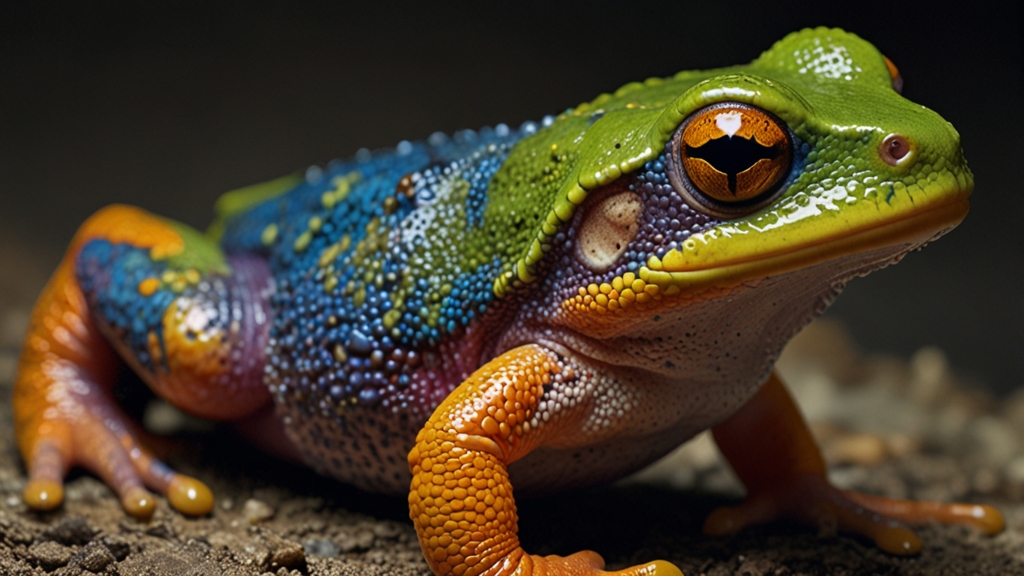Unbelievable Amphibian Colors That Will Blow Your Mind
Amphibians are a diverse and fascinating group of animals that are often eclipsed by their more flamboyant, feathered, or large-scaled counterparts. However, when it comes to showcasing an array of mind-blowing colors, amphibians hold their ground remarkably well. From neon greens to electric blues, their coloration serves purposes beyond mere aesthetics, often acting as a means of survival. Discover some of the most dazzling amphibians that mother nature has to offer.
The Red-Eyed Tree Frog
The Red-Eyed Tree Frog (Agalychnis callidryas) is one of the most iconic and vividly colored amphibians. Its bright green body is often adorned with splashes of blue and yellow stripes on its sides. However, the most striking feature is undoubtedly its large, bulging red eyes. These eyes are not just for show; they play a critical role in the frog's defense mechanism, helping to startle predators and giving the frog a precious moment to escape.
The Poison Dart Frog
No discussion of colorful amphibians would be complete without mentioning the Poison Dart Frog family (Dendrobatidae). These small, vibrant frogs can be found in the rainforests of Central and South America, with each species displaying a unique combination of colors and patterns. From metallic greens to fiery oranges and deep blues, these frogs are truly nature's living palettes.
While their colors are mesmerizing, they serve a critical function — warning predators of the frog's toxicity. The bright colors are an example of aposematic coloration, signaling 'Stay away, I'm dangerous!'
The Mandarin Newt
The Mandarin Newt (Tylototriton shanjing), also known as the Emperor Newt, is another striking amphibian. Native to China, this newt sports a vivid combination of black and bright orange. It's not just its colors that are striking; the newt's rough-textured skin and warty protrusions add another level of visual interest. These textures help it blend into its natural habitat, adding a layer of camouflage despite its bright colors.
The Axolotl
If quirky and surreal is more your flavor, look no further than the Axolotl (Ambystoma mexicanum). Often referred to as the "Mexican walking fish," the Axolotl is a neotenic salamander, meaning it retains its juvenile features throughout its life. Available in varying shades from leucistic white to melanoid black, the Axolotl employs its feathery gills and toothy grin to captivate enthusiasts. In specialized breeding, you can even find neon pink and gold variants, making them a favorite in the pet trade.
These charismatic amphibians are more than just pretty faces. Axolotls have the remarkable ability to regenerate lost limbs, making them a subject of intense scientific research.
The Fire Salamander
The Fire Salamander (Salamandra salamandra) is perhaps one of the most visually dramatic amphibians. Adorned in sleek black with yellow spots or stripes, this salamander seems almost painted by hand. Found primarily in European forests, its striking coloration serves as yet another example of aposematic signaling, warning potential predators of its toxic skin secretions.
The Brazilian Splendor Frog
Lastly, the Brazilian Splendor Frog (Adelphobates galactonotus) showcases stunning iridescent shades of blue, green, and even bright orange. These frogs are almost jewel-like in their appearance and are yet another testament to the dazzling diversity among amphibians.
These brilliant colors are not just for show; in nature, vivid patterns often serve dual purposes of attraction and repulsion — attracting mates while repelling predators.
In conclusion, the world of amphibians is incredibly vibrant and full of extraordinary colors. From the electrifying hues of the Poison Dart Frogs to the surreal allure of the Axolotl, these creatures never fail to astonish and captivate. So next time you think of colorful animals, don't forget to look beyond the birds and butterflies; the amphibians have plenty to showcase in their own right.










